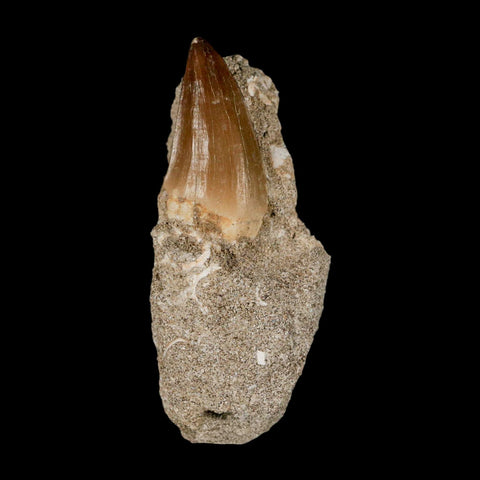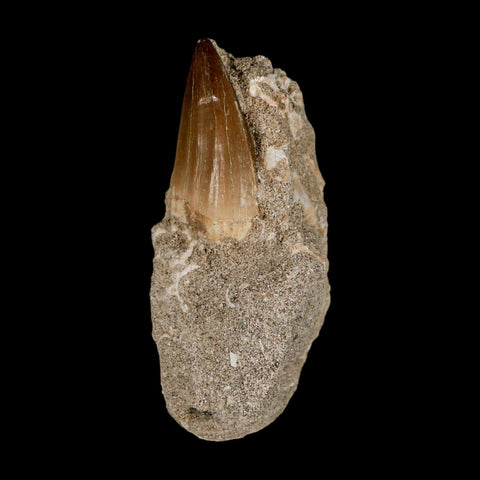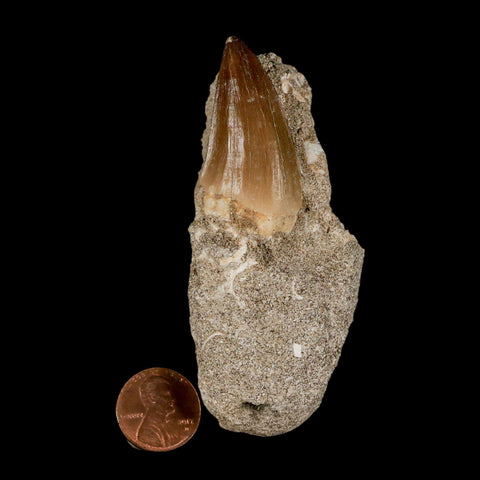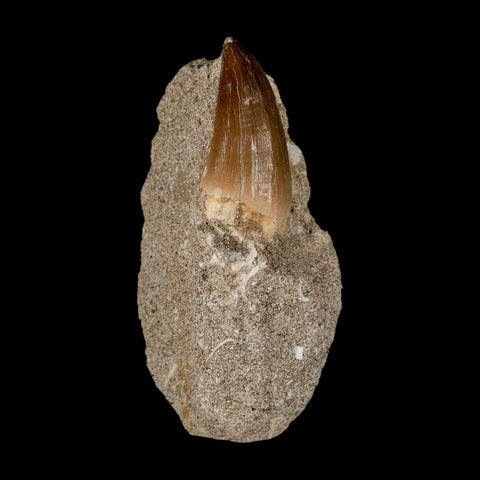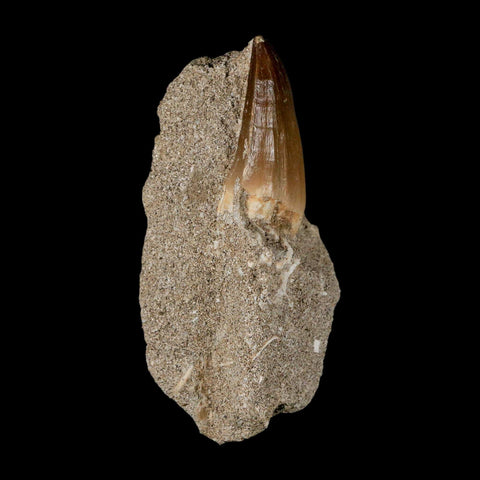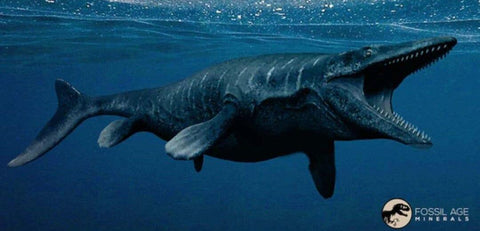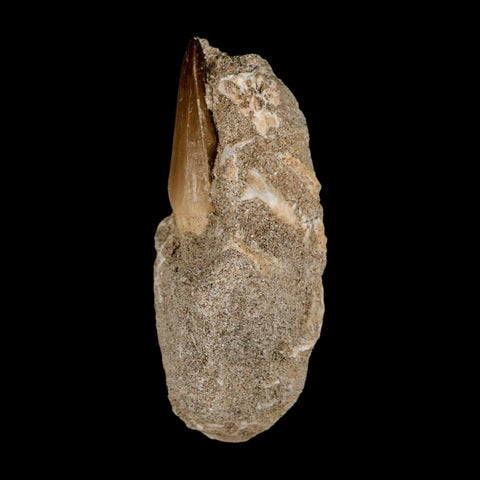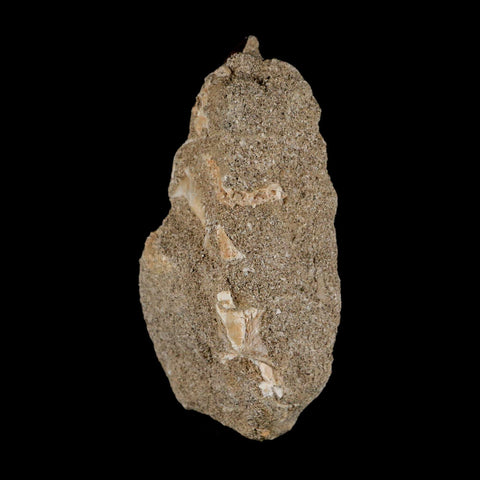1.6" Mosasaur Baugei Fossil Tooth In Matrix Cretaceous Dinosaur Era COA
Location: Oued Zem, Morocco
Weight: 3.7 Ounces
Dimensions: 3.4 Inches Long, 1.3 Inches Wide, 1.4 Inches Thick (Matrix)
Tooth Dimensions: 1.6 Inches Long, 0.9 Inches Wide.
Comes with a Certificate of Authenticity.
The item pictured is the one you will receive.
100 - 66 Million Years old, Late Cretaceous, Maastrichtian Epoch.
Mosasaurus Baugei is a species of mosasaur, an extinct group of large, predatory marine reptiles that lived during the Late Cretaceous period. These creatures were not dinosaurs but belonged to a separate lineage of squamates, closely related to modern-day snakes and monitor lizards. The genus Mosasaurus is the type genus for the family Mosasauridae, and its name, meaning "Meuse lizard," refers to the Meuse River valley in the Netherlands, where the first specimens were discovered
Mosasaurus baugei is a distinct species within the Mosasaurus genus, marked by unique anatomical traits that set it apart from other species like M. hoffmannii or M. maximus. Typical Mosasaurus features include a sleek body, strong tail, and jaws filled with sharp conical teeth designed for catching slippery prey. The identifying characteristics of M. baugei, often detailed through fossil skull and tooth structure, help paleontologists accurately classify this species and better understand the variety and evolution of mosasaurs in the Late Cretaceous seas.
Credible Reference Sources:
- Everhart, Michael J. Oceans of Kansas: A Natural History of the Western Interior Seaway. Indiana University Press, (Print)
- Lingham-Soliar, Theagarten. Mosasaur Paleobiology. Blackwell Publishing, (Print)
- Palmer, Douglas, and Barry Cox. The Illustrated Encyclopedia of Dinosaurs and Other Prehistoric Creatures. Hermes House, (Print)
- Russell, Dale A. A Vanished World: The Dinosaurs of Western Canada. Royal Tyrrell Museum of Palaeontology (Print)
- Williston, Samuel W. Water Reptiles of the Past and Present. University of Chicago Press, (Print)

Please be aware of the nature of fossils:
Being buried under the ground for millions of years under tons of pressure tends to be rough. No fossil comes out of the ground whole and perfect. Most fossils have undergone some restoration, while others are altered by man simply to enhance their presentation in different ways. The workers in Morocco do a very professional job of unearthing and preserving these natural treasures; however, natural cracks are commonly visible on the surface. These are part of the natural beauty of the fossil and are not considered defects.


